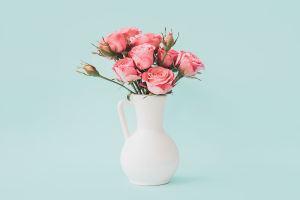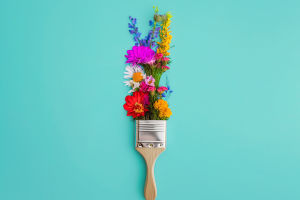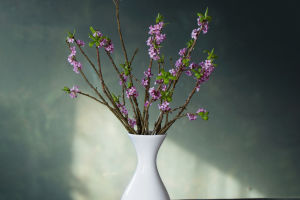Flower Arrangement Art
Flower arrangement is an exquisite art that transforms simple blooms into captivating works of beauty.
It might seem complex, but with the right techniques and a bit of creativity, you can craft stunning floral displays like a pro. Let's explore some of the best ways to create beautiful flower arrangements.
The Basics of Flower Arrangement
Choosing the Right Flowers: Start by selecting a mix of flowers that complement each other in color, size, and texture. You don't need to rely on rare or expensive blooms — sometimes simple, seasonal flowers make the most striking arrangements. Think of combining bold statement flowers like roses or sunflowers with filler flowers such as baby’s breath or eucalyptus to add balance.
Preparing the Flowers: Before arranging your flowers, prepare them properly. Trim the stems at a 45-degree angle to allow for better water absorption and remove any leaves that will sit below the waterline in the vase. This helps keep the water clean and the flowers fresh for a longer time.
Choosing a Vase or Container: The vase or container you choose plays a huge role in the overall look of the arrangement. Opt for tall vases for long-stemmed flowers and shorter, wider containers for more compact designs. Consider the style of your arrangement — is it modern, rustic, or classic? Your choice of container should enhance the overall vibe you're going for.
Flower Arrangement Techniques
1. Start with a Base: Begin by arranging greenery or filler flowers as the base. This creates a foundation for your arrangement and helps define its shape. Use foliage such as ferns, eucalyptus, or any greenery that complements your flowers. The base layer should provide structure without overpowering the main flowers.
2. Work with Odd Numbers: Odd numbers tend to create more visually appealing arrangements, as they look less symmetrical and more organic. For instance, use three or five main flowers as the focal point of your design. These should be evenly spaced but not perfectly aligned to avoid a stiff look.
HOW TO MAKE a $15 Flower Arrangement with *only* TRADER JOES FLOWERS!
Video By ASHLYN CARTER
3. Vary Heights and Textures: A well-arranged bouquet will have flowers of varying heights and textures. Place taller flowers toward the center or back, with shorter flowers and greenery filling in the front. Mix smooth petals with textured ones, and combine large blooms with smaller flowers for balance.
4. Create a Focal Point: Every flower arrangement needs a focal point — usually a large or vibrant flower that draws the eye. Surround this focal flower with smaller, complementary blooms that enhance but don’t compete with it. This technique gives the arrangement depth and focus.
Popular Flower Arrangement Styles
1. Symmetrical Arrangements: These are traditional, balanced arrangements where flowers are evenly distributed on both sides. This style works well for formal occasions or centerpiece displays.
2. Asymmetrical Arrangements: These have a more relaxed, natural look and often mimic the flow of nature. The focus is on creating visual movement, with flowers of different heights and colors grouped together more freely.
3. Minimalist Arrangements: Less is more with minimalist arrangements. These typically feature a few carefully selected blooms in a clean, modern vase. The focus here is on the beauty of each individual flower rather than an intricate design.
Best Practices for Flower Arrangement
1. Use Floral Foam: Floral foam can be your best friend when it comes to keeping your arrangement in place. It helps secure the stems, making it easier to create a stable, structured design. Soak the foam in water before placing it in the container to keep your flowers hydrated.
2. Mix Colors Wisely: The right combination of colors can make or break an arrangement. Choose a harmonious color palette — complementary colors like pink and green or analogous hues like purple and blue can create a pleasing visual flow. For bold designs, mix contrasting colors like orange and blue for a striking effect.
3. Use Seasonal Blooms: Seasonal flowers are not only fresh but also more affordable and eco-friendly. In spring, opt for tulips and daffodils; in summer, sunflowers and lilies are perfect; in fall, consider chrysanthemums and marigolds; and in winter, poinsettias and holly berries work wonders.
Mastering the art of flower arrangement doesn't have to be complicated. By understanding the basics, experimenting with different styles, and incorporating a few key techniques, you can create stunning, professional-looking floral displays. If you’re a beginner or looking to refine your skills, flower arrangement is a delightful way to bring beauty and life into any setting. So, pick your flowers, grab a vase, and let your creativity bloom!


